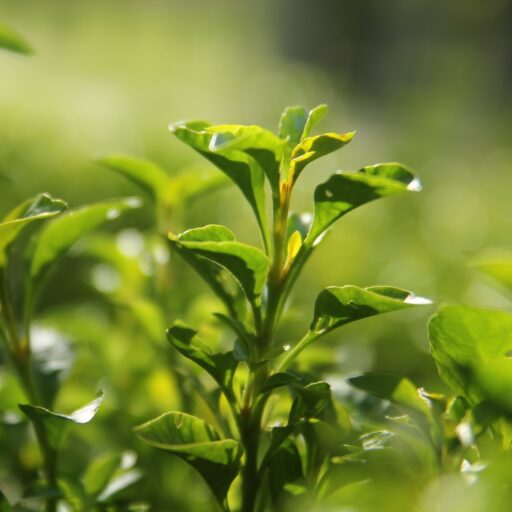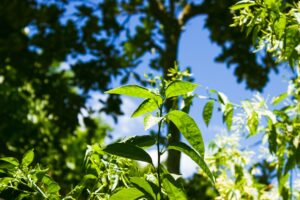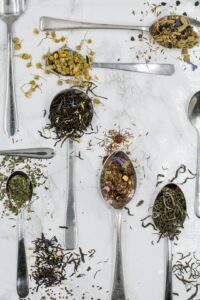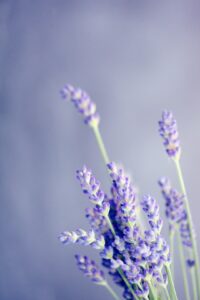Support our educational content for free when you purchase through links on our site. Learn more
Tea Herbs to Grow Indoors: A Comprehensive Guide [2023]
Are you a tea lover who dreams of growing your own fresh herbs for brewing your favorite cup of tea indoors? Well, you're in luck! Our team at Growing Teas™ has put together a comprehensive guide on the best tea herbs to grow indoors. Whether you have a spacious garden or a small apartment, we've got you covered. Get ready to embark on a tea-growing journey right in the comfort of your own home!
Table of Contents
- Introduction
- 9 Must-Have Tea Herbs for Indoor Gardening
- Chamomile
- Mint
- Lavender
- Rosemary
- Ginger
- Thyme
- Lemon Balm
- Lemon Verbena
- Rose Hips
- FAQ
- Quick Tips and Facts
- Useful Links
- Reference Links
Introduction
Gardening is a therapeutic and rewarding experience, and growing your own tea herbs takes this satisfaction to a whole new level. Not only will you have access to fresh and flavorful herbs, but you'll also have the flexibility to experiment with unique tea blends and enjoy the numerous health benefits they offer. Indoor gardening is an excellent solution for tea enthusiasts who may not have the space or resources for an outdoor garden. Plus, the aroma of these herbs will make your indoor space smell heavenly! So, let's dive into our list of the best tea herbs to grow indoors.
9 Must-Have Tea Herbs for Indoor Gardening
Chamomile
Chamomile is a classic herb often used for its calming properties in herbal tea blends. It has a delicate floral aroma and a subtle apple-like flavor. Chamomile plants thrive in bright, indirect light and well-draining soil. They require moderate watering and benefit from a pinch of fertilizer every month. Once your chamomile plants bloom, gently pluck the flowers and dry them to make your own soothing chamomile tea.
Mint
Mint is an aromatic herb known for its refreshing taste and invigorating aroma. It's perfect for adding a burst of flavor to your tea blends or enjoying on its own. Mint is an easy-to-grow herb that flourishes with plenty of sunlight and regular watering. Be mindful to plant mint in a separate container, as it can be quite invasive. Trim the leaves as needed to promote growth and ensure your indoor garden stays abundant with this delightful herb.
Lavender
If you're looking to add a touch of elegance to your tea collection, lavender is the way to go. Its beautiful purple flowers and soothing scent make for a delightful addition to your tea blends. Lavender plants thrive in sunny spots and well-drained soil. They require infrequent watering and benefit from regular pruning to encourage bushier growth. Once your lavender blooms, harvest the flowers and infuse them into your tea for a calming and aromatic experience.
Rosemary
Rosemary is not only a versatile culinary herb but also a fantastic addition to your indoor tea garden. It offers a fragrant and earthy flavor to your teas, providing a unique twist to traditional blends. Rosemary prefers plenty of sunlight, so place your plant near a sunny window. It requires light watering and well-draining soil. You can harvest rosemary sprigs as soon as your plant establishes itself, making it an excellent choice for beginners.
Ginger
Ginger is a spicy and invigorating herb that adds warmth to your tea. Growing ginger indoors allows you to have access to fresh ginger rhizomes whenever you need them. Start with a ginger root from the grocery store and plant it in a container with well-draining soil. Ginger thrives in warm and humid conditions, so be sure to provide a consistent environment. Harvest your ginger when the leaves turn yellow and enjoy the unique flavor it adds to your tea blends.
Thyme
Thyme is a versatile herb commonly used in cooking and medicinal applications. Its pleasant fragrance and earthy flavor make it a popular choice for tea enthusiasts. Thyme plants prefer bright sunlight and well-draining soil. Water them infrequently, allowing the soil to dry out between watering sessions. Trimming the stems regularly will promote bushier growth, ensuring you always have an abundant supply to harvest for your tea needs.
Lemon Balm
If you're a fan of citrusy teas, lemon balm is an herb you can't miss! It offers a tangy and refreshing flavor reminiscent of lemons. Lemon balm plants prefer indirect sunlight and moist soil. Be sure to provide proper drainage to prevent root rot. Harvest the leaves when they reach their maximum size for the best flavor and aroma. Enjoy lemon balm tea on its own or blend it with other herbs for a delightful infusion.
Lemon Verbena
When it comes to lemon-scented herbs, lemon verbena takes the spotlight with its strong and enchanting aroma. Its leaves release a heavenly lemony scent when crushed, making it a wonderful addition to your tea collection. Lemon verbena plants thrive in full sunlight and well-draining soil. Keep the soil consistently moist but avoid overwatering. Harvest the leaves regularly to encourage continuous growth. Prepare your tea with a few crushed leaves for an extraordinary citrusy experience.
Rose Hips
Rose hips are the flavorful fruits that form after roses bloom. They are packed with vitamin C and make a lovely addition to herbal tea blends. When growing tea roses indoors, allow the flowers to bloom fully and then watch as the rose hips develop. Harvest them when they turn a bright red or orange color. To use rose hips in your tea, remove the seeds and dry the fruit. Add a spoonful of dried rose hips to your tea for an infusion bursting with flavor and health benefits.
FAQ
What herbs can I grow to make tea?
- Chamomile
- Mint
- Lavender
- Rosemary
- Ginger
- Thyme
- Lemon Balm
- Lemon Verbena
- Rose Hips
Can you grow herbs indoors all year long?
Yes, you can! With proper care, light, and water, you can grow herbs indoors throughout the year. However, keep in mind that certain herbs may need more sunlight or temperature adjustments to thrive during winter months.
Can you grow tea tree indoors?
While the Camellia sinensis plant, the source of true tea, can be more challenging to grow indoors, it is not impossible. Tea trees require specific conditions, including high humidity and consistent temperatures. To successfully grow tea trees indoors, provide bright, indirect light and regular misting to maintain humidity levels.
Quick Tips and Facts
- Place your indoor herb garden near a sunny window to ensure your plants receive adequate light.
- Use well-draining soil to prevent root rot and ensure healthy plant growth.
- Water your tea herbs when the top inch of soil feels dry to the touch.
- Regularly trim your herbs to promote bushier growth and to prevent leggy plants.
- Consider using organic fertilizers to ensure the best flavor and health benefits in your tea herbs.
"I love waking up to the aroma of freshly brewed mint tea made from the herbs I grow in my indoor garden. It's a simple pleasure that brings me joy every day." – Happy Tea Enthusiast
Useful Links
- Growing Teas™
- Chamomile Tea on Amazon
- Mint Tea on Amazon
- Lavender Tea on Amazon
- Rosemary Tea on Amazon
- Ginger Tea on Amazon
- Thyme Tea on Amazon
- Lemon Balm Tea on Amazon
- Lemon Verbena Tea on Amazon
- Rose Hips Tea on Amazon
Reference Links
- [1] Pasek, J., et al. (2013). Environmental preferences of lemon balm (Melissa officinalis L.) cultivated under controlled conditions. Acta Scientiarum Polonorum Hortorum Cultus, 12(6), 73-81. Link
- [2] Can, Z., et al. (2004). Variability of essential oil composition of Turkish R. officinalis L. Biochemical Systematics and Ecology, 32(4), 341-348. Link
- [3] Choi, W., et al. (2019). Effects of light intensity on growth and essential oil composition in rosemary (Rosmarinus officinalis L.). Plants, 8(9), 337. Link







